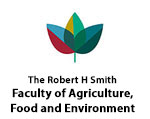Hebrew University develops vintage teff seeds into a commercial crop for farmers
Researchers are bringing teff – the staple food for millions of Ethiopians – to Israel.
It’s best known as the main ingredient of injera, the sour, Ethiopian flatbread, and it’s now being described as a new superfood, a quinoa for the 2020s.
It is gluten-free, rich in amino acids, protein, fiber and minerals. And it can grow in harsh conditions, and drought-prone climates.
Prof Shuki Saranga cultivating teff at the Joseph Marguleas Experimental Farm, in Rehovot. Courtesy Bringing a crop from the Horn of Africa to the Mediterranean sounds simple enough, to those outside the world of agriculture.
But as Prof Shuki (Yehoshua) Saranga, from the Hebrew University of Jerusalem tells NoCamels, it’s a huge challenge to identify the one breed out of many hundreds that is best suited for modern, mechanized cultivation.
The problem is that 95 per cent of the world’s teff is grown in Ethiopia, and very little of it is available for export.
The government actually banned all foreign sales of teff between 2006 and 2015 to make sure there was enough for its own population and even now exports are at a very low level.
Researchers are bringing teff – the staple food for millions of Ethiopians – to Israel.
It’s best known as the main ingredient of injera, the sour, Ethiopian flatbread, and it’s now being described as a new superfood, a quinoa for the 2020s.
It is gluten-free, rich in amino acids, protein, fiber and minerals. And it can grow in harsh conditions, and drought-prone climates.
Prof Shuki Saranga cultivating teff at the Joseph Marguleas Experimental Farm, in Rehovot. Courtesy Bringing a crop from the Horn of Africa to the Mediterranean sounds simple enough, to those outside the world of agriculture.
But as Prof Shuki (Yehoshua) Saranga, from the Hebrew University of Jerusalem tells NoCamels, it’s a huge challenge to identify the one breed out of many hundreds that is best suited for modern, mechanized cultivation.
The problem is that 95 per cent of the world’s teff is grown in Ethiopia, and very little of it is available for export.
The government actually banned all foreign sales of teff between 2006 and 2015 to make sure there was enough for its own population and even now exports are at a very low level.

